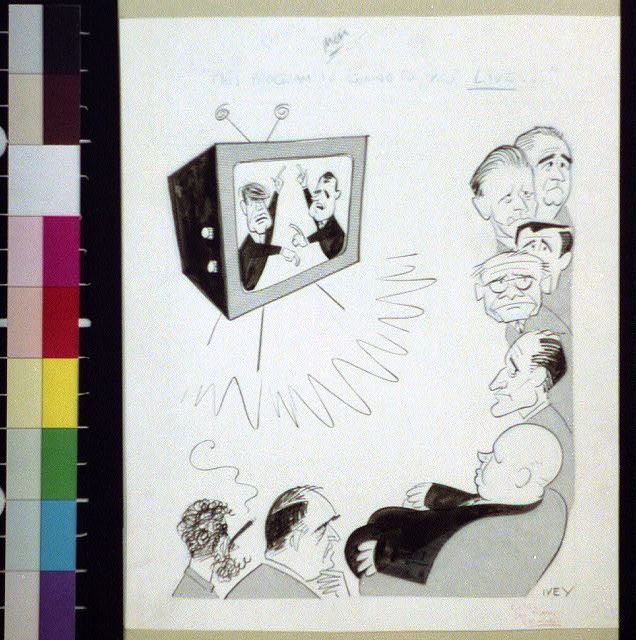
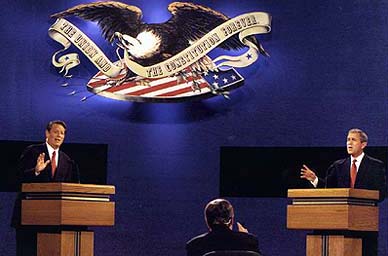
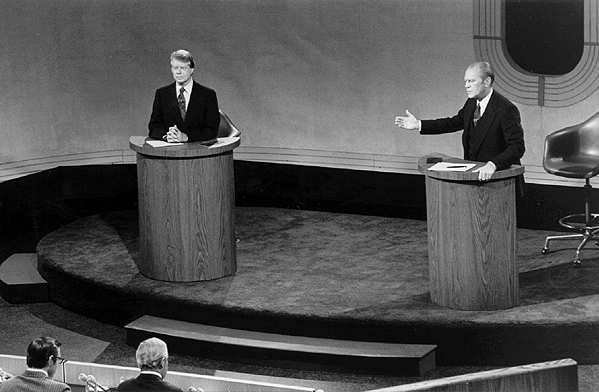
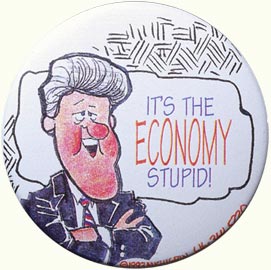
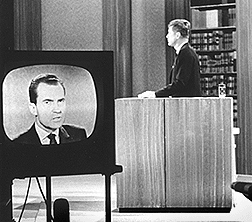
This site is intended as a teaching resource for high school government and history classes and undergraduate history and political science students. It will focus on the forty four-year history of presidential debates (1960-2004) and will provide insights not only into the debates themselves but into the historical context of the debates as well as the political environment in which they occurred.
In order for students to fully understand the substance of the debates, it will be necessary for them to study the issues which the candidates had to address. This should help students understand the history of the second half of the twentieth century since the debates provide a quadrennial snapshot of the major issues of the period. (Unfortunately, the sixteen-year gap between 1960 and 1976 in which there were no presidential debates necessarily eliminates a significant portion of history that included not only the upheavals of the Viet Nam War and Watergate but major events such as the political assassinations that scarred the decade of the sixties.)
It is important to emphasize that this site is intended to supplement survey courses in history and government. In no way is it intended to replace a comprehensive treatment of this period. However, an important advantage has to do with the site’s versatility. It can be utilized chronologically as history instructors progress through the second half of the twentieth century or perhaps could be a useful review tool at the end of the year. It could also be used thematically; nuclear proliferation, for example, is a theme that recurs time and time again in the debates. For government and political science teachers, the site could be used to supplement instructional units related to elections, campaign finance, the presidency, political propaganda, media influence, etc.
Learning activities for the site might include:
- Use primary sources, including video, transcripts, and newspaper accounts, to identify key campaign issues.
- Use primary sources to contrast candidates’ stands on the key issues of the campaign.
- Use primary sources to assess and contrast candidates’ “performance” in the debates. What constitutes an effective performance?
- Is it possible to determine who are the “winners” in presidential debates? On what basis should winners be determined?
- Use newspaper archives and secondary sources to assess the candidates’ accuracy and truthfulness. (e.g., we now know that, while castigating Kennedy’s proposal for organizing Cuban insurgents to overthrow Castro, Nixon was privy to an Eisenhower plan to do exactly that.)
- Including 2004, there have been nine presidential election campaigns with presidential debates. There have been a number of formats for the debates. Using the website, identify the various formats and assess the effectiveness of each.
- Respond to the allegation that, because of the necessity for TV advertising, the size of a candidate’s campaign treasury is the key factor in winning an election. Do televised debates mitigate the influence of money?
The following secondary sources can be used to complement the material on the website. Buying and reading one or two of these books might be required of undergraduates. High school teachers would be forced to risk violation of copyright laws by using class-sets of copied excerpts.
- Hellwig, Susan A., et al. Televised Presidential Debates: Advocacy in Contemporary America .New York: Praeger, 1992.
- Kraus, Sidney. Televised Presidential Debates and Public Policy. Hillsdale, NJ: L. Erlbaum Associates, 2000.
- Lanoue, David J. and Peter R. Schrott, eds. The Joint Press Conference: The History, Impact, and Prospects of American Presidential Debates. New York: Greenwood Press, 1991.
- James B. Lemert, et al. News Verdicts, The Debates, and Presidential Campaigns. New York: Praeger, 1991.
-
Martel, Myles. Political Campaign Debates: Images, Strategies, and Tactics. New York: Longman Press, 1983.